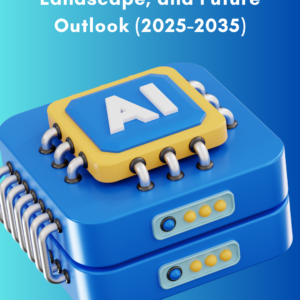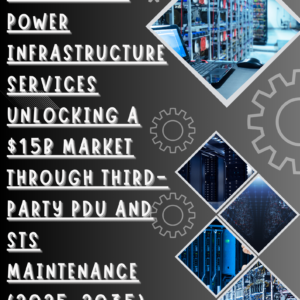1. Market Overview
a. Definition and Scope
-
- Infrastructure automation
- Workload automation and orchestration
- Hybrid IT environment characteristics
b. Market Size and Growth Projections
-
- Current market valuation
- Growth forecasts (2025-2035)
- Regional market dynamics
c. Key Market Drivers
-
- Digital transformation initiatives
- Increasing complexity of IT environments
- Need for operational efficiency and cost reduction
- Shift towards hybrid and multi-cloud architectures
d. Market Segmentation
-
- By deployment model (on-premises, cloud, hybrid)
- By organization size (SMEs, large enterprises)
- By industry vertical (BFSI, healthcare, manufacturing, etc.)
2. Competitive Landscape
a. Types of Vendors
-
- Traditional IT automation providers
- Cloud-native automation platforms
- Enterprise software vendors with automation capabilities
- Open-source solutions and their commercial counterparts
b. Market Structure
-
- Market concentration
- Barriers to entry
- Merger and acquisition trends
c. Competitive Strategies
-
- Product differentiation approaches
- Pricing models and strategies
- Partnership and ecosystem development
d. Emerging Players and Disruptors
-
- Startups and their innovative approaches
- Impact of AI and machine learning on the competitive landscape
3. Key Purchasing Criteria
a. Technical Capabilities
-
- Breadth of automation capabilities (infrastructure, applications, networks)
- Support for diverse environments (on-prem, public cloud, private cloud)
- Integration with existing tools and platforms
- Scalability and performance
b. Ease of Use and Management
-
- User interface and experience
- Self-service capabilities
- Monitoring and reporting features
c. Security and Compliance
-
- Access control and authentication mechanisms
- Audit trails and compliance reporting
- Data protection and privacy features
d. Cost Considerations
-
- Total cost of ownership (TCO)
- Pricing models (subscription, usage-based, perpetual)
- ROI and cost savings potential
e. Vendor Reputation and Support
-
- Market presence and financial stability
- Customer support and professional services
- Community and ecosystem around the product
f. Future-Proofing and Innovation
-
- Product roadmap and innovation pipeline
- Adaptability to emerging technologies (AI, edge computing)
- Support for future IT architectures
4. Technology Trends Shaping the Market
a. AI and Machine Learning Integration
-
- Predictive analytics for workload optimization
- Intelligent automation and self-healing capabilities
- AI-driven decision making in orchestration
b. Containerization and Microservices
-
- Automation for container orchestration
- Support for serverless architectures
c. DevOps and GitOps Integration
-
- Automation in CI/CD pipelines
- Infrastructure as Code (IaC) capabilities
d. Edge Computing Support
-
- Extending automation to edge environments
- Managing distributed workloads across edge and core
5. Challenges and Opportunities
a. Challenges
-
- Complexity of hybrid environments
- Skill gaps in automation technologies
- Balancing standardization with customization
b. Opportunities
-
- Expansion into new industry verticals
- Integration with emerging technologies (5G, IoT)
- Addressing compliance and regulatory requirements
6. Use Cases and Applications
-
- IT infrastructure provisioning and management
- Application deployment and updates
- Workload scheduling and orchestration
- Disaster recovery and business continuity
7. Future Outlook (2025-2035)
-
- Projected evolution of automation and orchestration technologies
- Shifts in customer demands and preferences
- Potential disruptors in the market
8. Case Studies (Generalized)
-
- Successful implementations across various industries
- Challenges overcome in complex hybrid environments
- Quantifiable benefits and ROI examples
9. Best Practices for Evaluation and Implementation
-
- Developing a comprehensive automation strategy
- Conducting effective POCs and trials
- Change management and skill development
10. Regulatory and Compliance Considerations
-
- Data sovereignty and privacy regulations
- Industry-specific compliance requirements
- Environmental and sustainability factors
11. Conclusion
-
- Summary of key market dynamics
- Critical success factors for vendors and customers
12. Appendices
-
- Glossary of automation and orchestration terms
- Comparison matrix of key features across solution types
- Decision framework for automation solution selection
#InfrastructureAutomation #WorkloadAutomation #HybridIT #CloudAutomation #DigitalTransformation #ITComplexity #OperationalEfficiency #AutomationMarket #AIInAutomation #HybridCloud #DevOpsAutomation #EdgeComputing #AIIntegration #AutomationTrends





